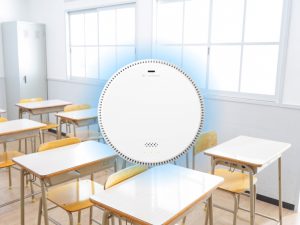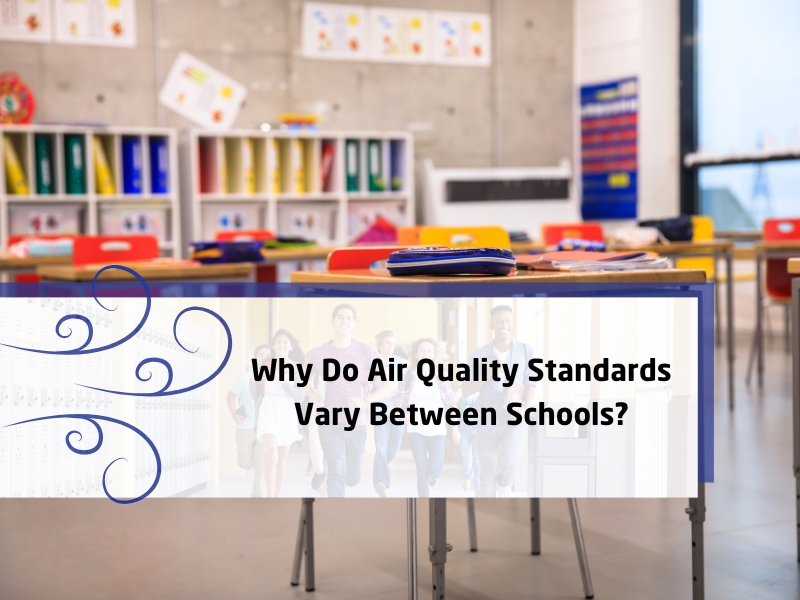Ensuring a healthy learning environment for students is crucial. One key aspect that significantly impacts student health and performance is air quality. However, air quality standards can vary considerably between schools. This article explores the factors contributing to these differences, emphasising the importance of monitoring and management practices.
What factors influence air quality standards in schools?
Several elements can affect air quality standards in educational institutions. Understanding these factors is vital for addressing the issues.
- Geographic location: Schools in urban areas often experience higher pollution levels due to traffic and industrial activities, necessitating stricter air quality standards.
- Local climate: Weather patterns like humidity and temperature can impact the quality of indoor environments. For example, higher humidity levels may encourage mould growth, requiring better ventilation strategies.
- Building age: Older school buildings may need more modern filtration and ventilation systems, resulting in less optimal indoor environments than newly constructed facilities.
- Funding and resources: Schools with more funding may access better air quality monitoring and maintenance systems, while underfunded schools may need help meeting minimum standards.
- Policy and governance: Local education authorities and government regulations dictate air quality standards, leading to variations in enforcement and compliance across different regions.
How do different state regulations impact air quality in schools?
State regulations play a crucial role in shaping air quality standards. Each state may have different rules, leading to consistency in air quality across schools.
- Legislative differences: States set laws impacting how schools manage indoor environments.
- Regulatory agencies: Different states may have different agencies responsible for enforcing air quality standards, affecting the level of oversight schools receive.
- Compliance deadlines: Some states may implement stricter deadlines for compliance with air quality standards, pressuring schools to adopt new systems quickly.
- Funding incentives: States offering financial incentives for schools to enhance indoor environmental conditions can lead to improved monitoring and ventilation systems.
- Public awareness campaigns: Some states actively promote awareness about air quality, encouraging schools to prioritise better indoor environments.
What role do school facilities play in air quality variations?
The design and maintenance of school facilities significantly influence air quality. Several factors related to the physical environment can affect air quality standards.
- Ventilation systems: The effectiveness of a school’s ventilation system determines how well it can remove pollutants from the air.
- Building materials: Materials used in school buildings may emit toxic substances that contribute to indoor pollution.
- Room layout: The arrangement of classrooms and common areas can affect air circulation.
- Maintenance practices: Regular maintenance, including cleaning air filters and ensuring HVAC systems are in optimal condition, is essential for maintaining a healthy indoor environment.
- Outdoor spaces: Access to outdoor areas can enhance air quality, allowing fresh air circulation and reducing indoor pollutant concentrations.
How can indoor activities affect air quality standards in schools?
Indoor activities can significantly impact air quality. Understanding these activities helps schools manage air quality effectively.

- Physical education: Intense physical activity can increase airborne particles, irritating allergies and respiratory systems.
- Art and craft classes: Certain materials, such as paints and adhesives, can release Volatile Organic Compounds (VOCs) into the air.
- Cooking classes: Schools with kitchens must have adequate ventilation to disperse smoke and cooking fumes to maintain a healthy indoor atmosphere.
- Cleaning activities: Regular cleaning can freshen the air and reduce indoor pollutants, but harsh chemicals can introduce new contaminants.
- Classroom behaviour: High occupancy and classroom movement can influence air circulation, potentially raising CO2 levels.
What’s the significance of indoor air monitoring in schools?
Monitoring indoor air quality is essential for maintaining a healthy environment for students and staff. Here’s why it’s necessary.
- Identifying pollutants: Regular monitoring helps identify harmful pollutants, enabling schools to take action.
- Real-time data: Continuous monitoring provides real-time data, allowing immediate responses to air quality changes.
- Informed decisions: Data-driven insights help school administrators make informed decisions about ventilation and filtration needs.
- Compliance verification: Monitoring assists schools in ensuring compliance with local regulations.
- Enhancing learning conditions: Good air quality positively affects student concentration, attendance, and overall health.
How does the Edimax AI-2005BE help schools meet air quality standards?
The Edimax AI-2005BE is a comprehensive air quality monitoring solution designed to help schools maintain optimal air quality.

- 10-in-1 sensor capabilities: This device measures a wide range of air pollutants, including PM2.5, CO2, and VOCs, ensuring comprehensive monitoring.
- Real-time alerts: The AI-2005BE sends real-time alerts via a mobile app, enabling quick responses to air quality issues.
- Easy integration: It easily integrates into existing air circulation systems, simplifying the setup process.
- Data-driven insights: Schools can generate insightful reports based on historical data, aiding in long-term air quality management.
- Security features: Vape and THC detection capabilities are especially beneficial for schools aiming to maintain a safe learning environment.
What health risks are associated with inadequate ventilation and air filtration in schools?
Poor air quality due to inadequate ventilation and filtration can pose significant health risks for students and staff.
- Respiratory issues: Poor air quality can exacerbate asthma and other respiratory conditions, leading to increased absenteeism.
- Allergies: Dust and allergens in the air can trigger allergic reactions, affecting students’ concentration ability.
- Cognitive impairment: High levels of CO2 can impair mental functions, impacting learning and performance.
- Long-term health risks: Prolonged exposure to indoor air pollutants can lead to chronic health conditions, including cardiovascular diseases.
- Mental well-being: Air pollution can negatively influence students’ emotional and mental health.
How can schools implement effective air quality management strategies?
Effective air quality management strategies are essential for maintaining a healthy learning environment.
- Regular monitoring: Schools should use air quality sensors to monitor indoor air conditions regularly.
- Improving ventilation: Upgrading ventilation systems can significantly enhance air quality by ensuring adequate air exchange.
- Training staff: Educating employees on the significance of good ventilation and air circulation can contribute to a healthier environment.
- Creating policies: Implementing comprehensive indoor air management strategies can foster standardised procedures throughout the school.
- Engaging with experts: Collaborating with specialists can provide valuable insights and strategies for improvement.
What support does Edimax offer for air quality management in schools?
Edimax offers various services and support for schools looking to improve their air quality management.
- Consultation services: Edimax provides expert advice on indoor air quality solutions tailored to the specific needs of schools.
- Installation services: They offer professional air quality monitoring systems installation, ensuring proper setup and functionality.
- Maintenance support: Ongoing maintenance services ensure air quality monitors operate effectively over time.
- Customer support: Their customer service team is always available to assist schools with any questions or issues related to air quality management.
Enhance Your school’s indoor environment with Edimax!
A healthy indoor environment is crucial for students and staff to thrive. The Edimax AI-2005BE offers a comprehensive solution for effectively monitoring and managing indoor air quality. By investing in air quality management strategies and partnering with Edimax, schools can create healthier learning environments that support student success. Discover Edimax’s innovative air quality monitoring solutions designed to enhance the learning environment in your school.
